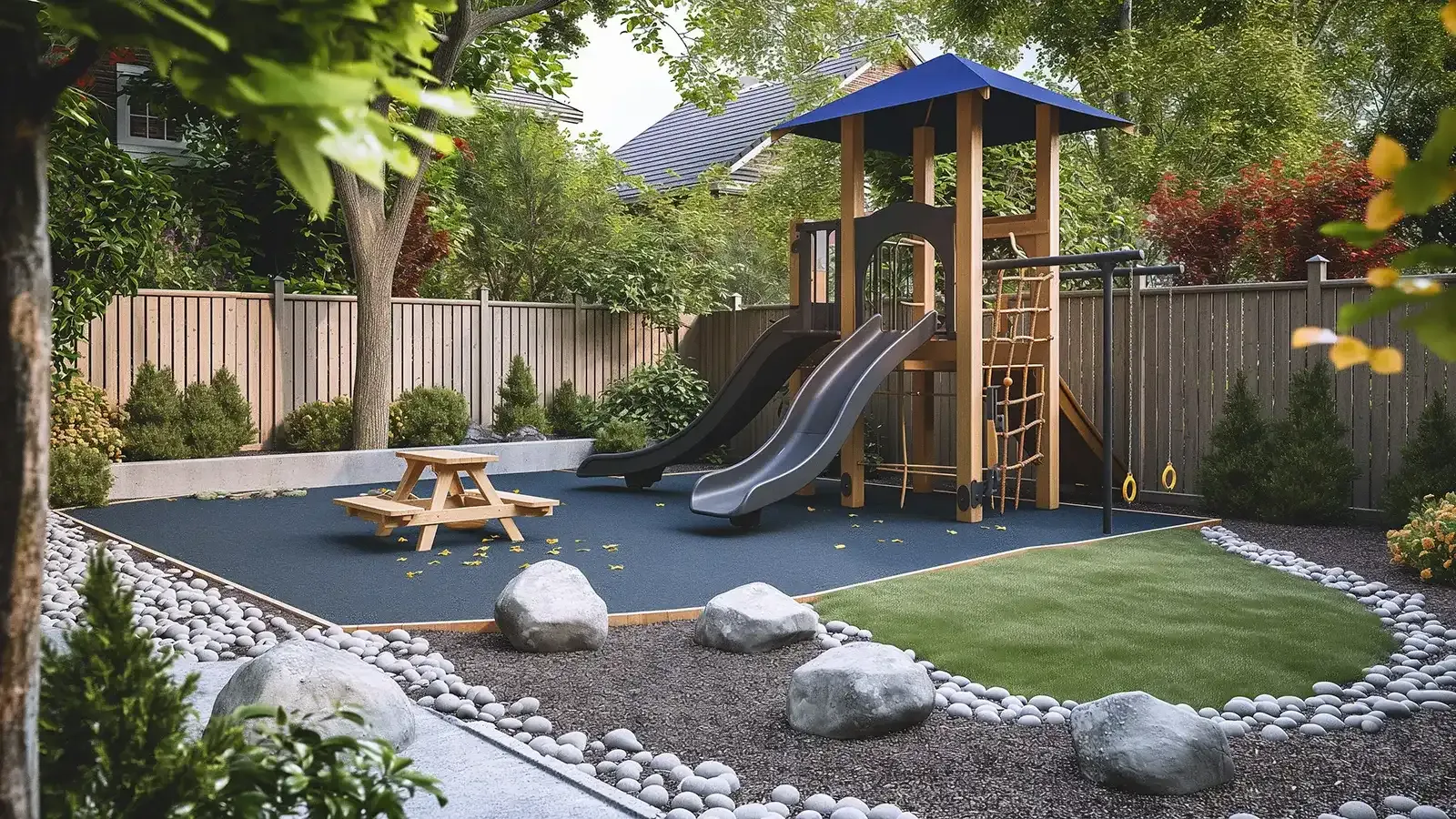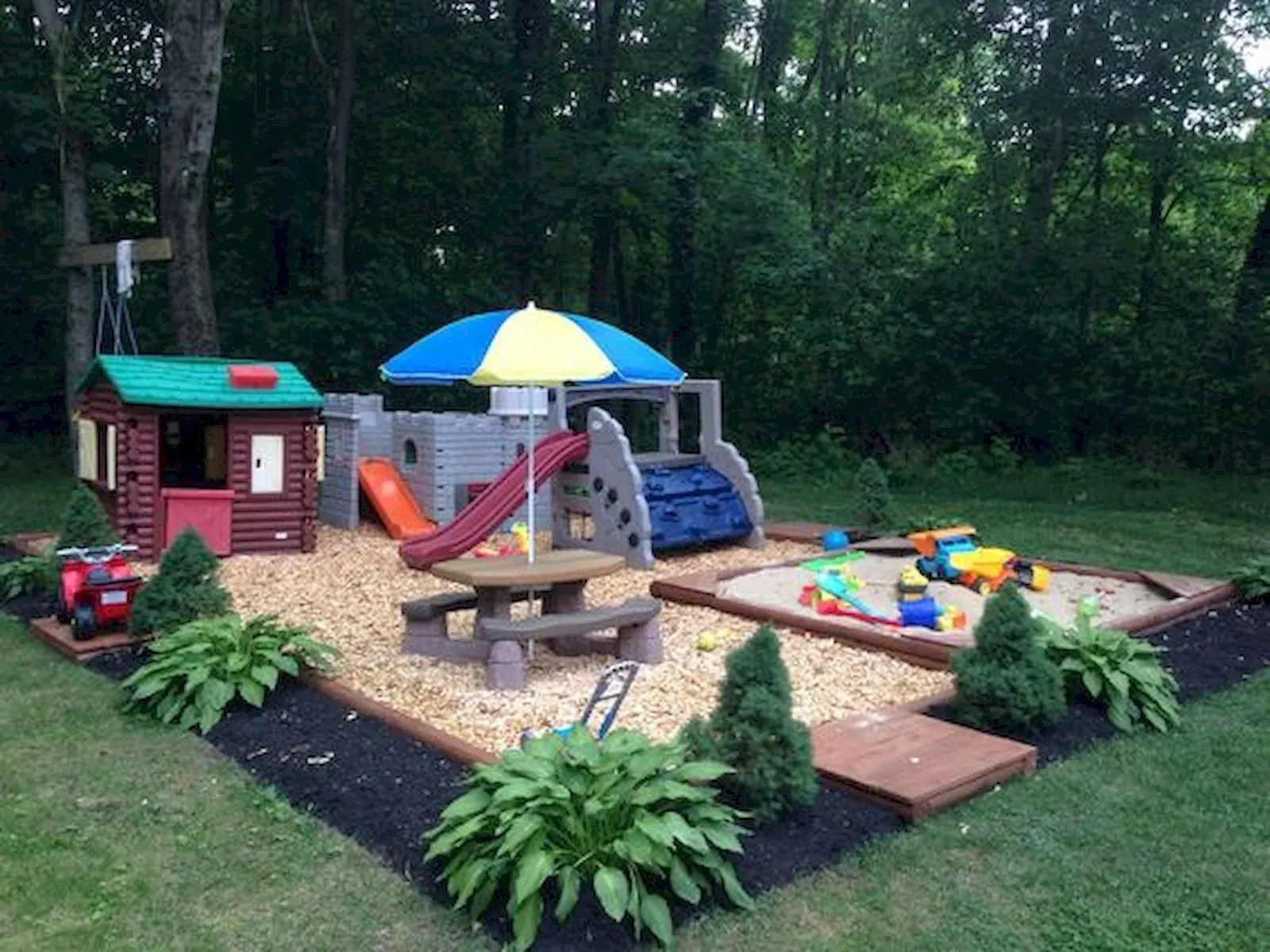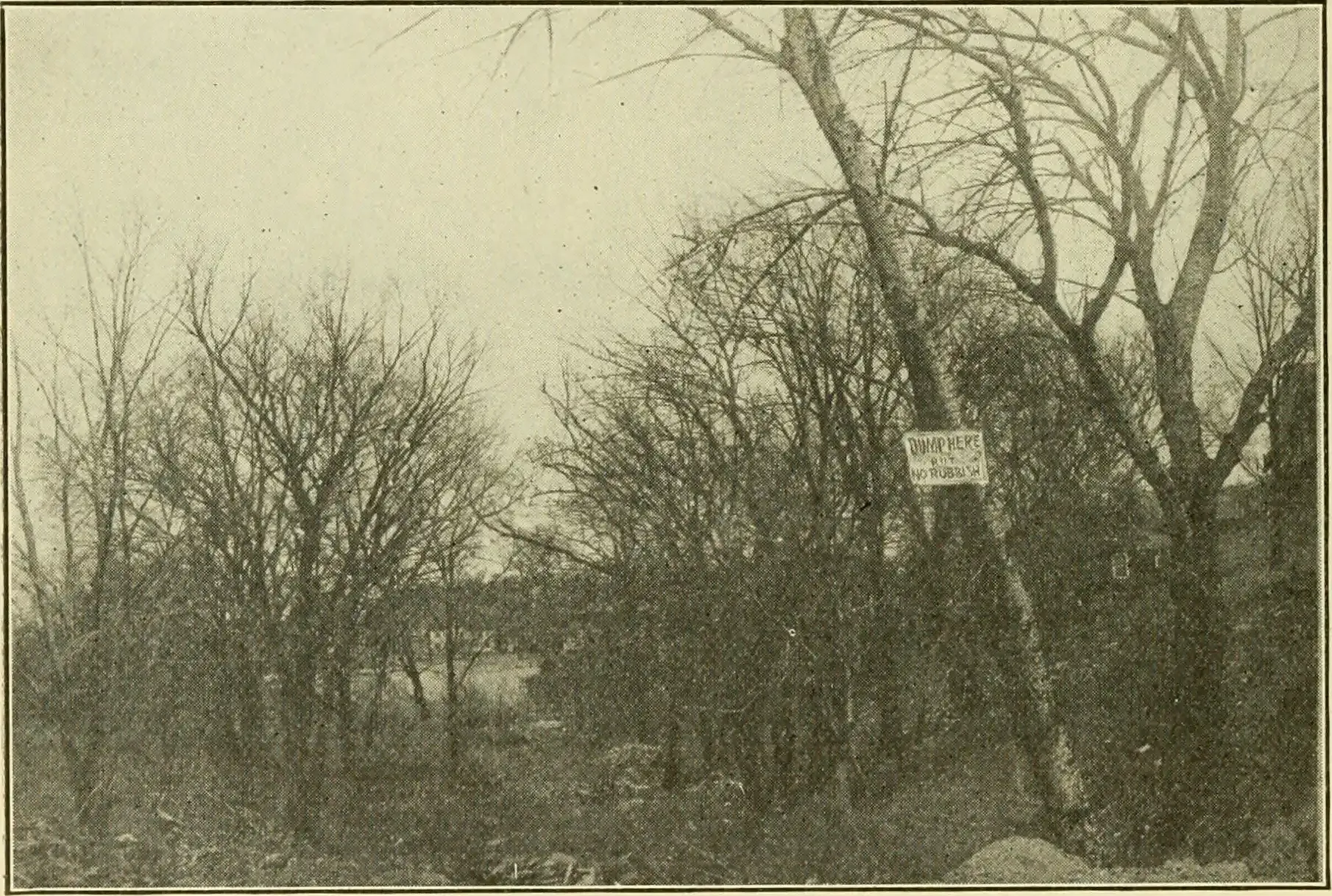Table of Contents
Let's face it, keeping kids entertained and active outdoors can feel like a constant quest. You want them off screens, breathing fresh air, and burning energy safely. That's where great playground backyard ideas come in. Turning your yard into a kid-friendly adventure zone isn't just about tossing a swing set out there. It’s about creating a space where imaginations run wild, muscles get strong, and memories are made. Whether you're working with a small patch of grass or a sprawling landscape, there are smart, fun ways to design a play area that fits your family and your budget. This article walks you through the process, from figuring out what your kids actually want to ensuring everything is safe and sound. We'll explore different options, talk about costs, and give you practical tips for making your playground backyard ideas a reality. Get ready to ditch the dull and build something awesome.
Planning Your Playground Backyard Ideas

Planning Your Playground Backyard Ideas
Assessing Your Space and Wallet
Alright, so you're thinking about diving into this whole backyard playground thing? Cool. First off, let's get real about what you're working with. I mean, size matters here. Do you have a sprawling lawn that could host a small amusement park, or are we talking about a cozy corner that needs some smart utilization?
Grab a tape measure and actually map it out. Note where the sun hits hardest, where the shade is, and importantly, what the ground is like. Is it flat? Got a slope? Rocky? These aren't minor details; they dictate what kind of equipment is even feasible. Next, the money talk. Nobody likes it, but you need a budget. A simple swing set is a different ballgame than a custom-built fort with a rock wall and tube slide. Figure out a realistic range before you get lost in the shiny catalogs.
What Do the Kids Actually Want? (And Need)
Before you start buying lumber or browsing plastic fantastic playsets, bring the actual users into the conversation. Ask your kids what kind of play they love. Are they climbers? Swings enthusiasts? Do they love imaginative play like running a "store" or defending a "castle"? Their input is gold, and frankly, it saves you from building something they'll ignore after two weeks.
Think about their ages too. A toddler's needs are vastly different from a ten-year-old's. You want equipment they can grow into a bit, but nothing so advanced it's just frustrating or dangerous right now. Consider activities that promote different skills: climbing for gross motor, a sandpit for sensory play, maybe a small stage for performance art (or just jumping). This isn't just about filling space; it's about creating opportunities for development. Planning Your Playground Backyard Ideas should start with the end-users in mind.
- Measure your available space accurately.
- Identify sun exposure and ground conditions.
- Set a realistic budget before shopping.
- Talk to your kids about their play preferences.
- Consider the current ages and future growth of your children.
- Prioritize activities that encourage various skills.
Choosing the Right Backyard Playground Ideas

Choosing the Right Backyard Playground Ideas
Picking Your Main Attraction
you've measured, budgeted, and interrogated the kids about their play dreams. Now comes the fun part – actually choosing the stuff. For many families, the big decision revolves around the main structure. Are you leaning towards a classic swing set, maybe one with a slide and a small deck? Or does a full-blown playhouse with multiple levels and climbing features feel more like it?
Think about what offers the most bang for your buck in terms of play value and longevity. A simple swing set is great for younger kids but might get boring fast for older ones. A more complex playset offers varied activities – climbing, sliding, hiding, imaginative play – which can keep them engaged for years. Consider the footprint too; some of these larger structures take up a surprising amount of real estate. Choosing the right playground backyard ideas means balancing space, budget, and how your kids actually play.
DIY or Buy? Materials Matter
Once you have a sense of the type of structure, you hit another fork in the road: build it yourself or buy a kit? DIY can save money if you're handy and have the time, plus you can customize it exactly how you want. I once helped a friend build a simple fort, and while it took a weekend and a few trips to the hardware store, seeing the kids' faces when it was finished was pretty cool. Just be honest about your skills and patience level. Buying a pre-fab kit is faster and comes with instructions (usually), but you're limited to standard designs and assembly can still be a headache.
Material is another big one. Wood is the classic choice – looks natural, feels sturdy, but requires sealing and maintenance to prevent rot and splinters. Plastic is low-maintenance, often brightly colored, and splinter-free, but it can fade over time and might not be as robust for older kids. Metal swing sets are durable but can get hot in the sun and sometimes feel less integrated into the yard aesthetic. Think about the climate you live in and how much upkeep you're willing to do when evaluating different playground backyard ideas.
Playset Type | Pros | Cons | Best For |
|---|---|---|---|
Classic Swing Set | Simple, relatively inexpensive, good for basic swinging/sliding. | Limited activities, kids might outgrow quickly. | Younger kids, smaller yards, tighter budgets. |
Multi-Activity Playset (Wood/Plastic) | Offers varied play (climbing, sliding, forts), lasts longer. | More expensive, requires more space, assembly can be complex. | Mixed ages, larger yards, families wanting long-term value. |
Standalone Playhouse | Great for imaginative play, can be customized. | Doesn't offer physical challenges like climbing/swinging. | Kids focused on role-playing, smaller yards (if compact). |
Adding the Little Touches: Beyond the Big Stuff
Don't forget the smaller elements that can really round out your playground backyard ideas. A sandbox is a timeless classic, providing hours of sensory play. Just make sure you get one with a cover to keep the neighborhood cats out – trust me on this one. Mud kitchens are fantastic for messy, creative play and can be built from scrap materials or bought relatively cheaply. My kids spent more time "cooking" dirt pies than they did on their slide for a while.
What about a simple climbing dome or a slackline strung between two trees? These are relatively inexpensive additions that add different physical challenges. Even something as simple as a designated area for building with large blocks or a spot for a kiddie pool in the summer can enhance the play space. These smaller pieces allow you to add layers of fun and cater to different moods and energy levels, making your backyard truly a hub of activity.
Building BudgetFriendly Play Havens

Building BudgetFriendly Play Havens
Scrounging for Savings: Finding Free and Cheap Materials
let's talk about building awesome playground backyard ideas without blowing your kid's college fund. The secret weapon here is thinking outside the box and being a bit of a scavenger. Seriously. Check local online marketplaces like Craigslist or Facebook Marketplace for used swing sets, slides, or even lumber. People are often just happy to get rid of stuff taking up space, sometimes for free or dirt cheap. You might find a perfectly good play structure that just needs a little cleaning and maybe a coat of paint.
Don't underestimate scrap yards or construction sites (with permission, obviously). Often, you can find sturdy wood planks, tires, or even large cable spools that are perfect for building simple structures like balance beams or small forts. Just be sure whatever you find is safe, free of sharp edges or toxic finishes. A little effort in hunting can save you significant cash on your playground backyard ideas project.
Repurposing and DIY Delights
This is where creativity really kicks in for your budget playground backyard ideas. Old tires? Stack them, bolt them together, paint them bright colors – instant climbing structure or tunnel. Pallets? With some careful deconstruction and sanding, they become the base for a simple playhouse frame or a mud kitchen counter. Got an old wooden ladder? Secure it horizontally between two sturdy posts or trees for a simple climbing challenge. Even large cardboard boxes can become temporary forts or tunnels before recycling.
Building simple things yourself is often way cheaper than buying pre-made. A basic sandbox is just four pieces of wood and some sand. A small balance beam is a log or a thick plank set on low supports. These aren't complex engineering feats. They're straightforward projects that add play value without requiring a second mortgage. Plus, there's a certain satisfaction in building something with your own hands for your kids' playground backyard ideas.
- Look for used play equipment online (Craigslist, Facebook Marketplace).
- Check with local construction sites or scrap yards for free materials (lumber, tires, spools).
- Repurpose old tires into climbing features.
- Use wooden pallets for building playhouse frames or mud kitchens.
- Transform old ladders into climbing elements.
- Build simple structures like sandboxes or balance beams yourself.
Adding Low-Cost Play Elements
You don't need a giant structure to have a great play space. Think about adding smaller, inexpensive elements that encourage different types of play. A simple clothesline strung low between two posts can become a "zipline" for toys or a place to hang artwork. Old pots and pans and some dirt turn a corner of the yard into a fantastic mud kitchen. Scatter some large, smooth rocks for climbing and balancing. Bury a few plastic pipes just below the surface for kids to "excavate."
Even natural elements are great for playground backyard ideas on a budget. A designated digging area, a pile of sticks for fort building, or a few large logs to jump on and off provide endless entertainment. These low-cost additions complement any larger structures you might have or stand alone as engaging play zones. They tap into kids' natural curiosity and desire to interact with the physical world around them, proving that fun doesn't have to be expensive.
"The best playgrounds are often the ones that let kids use their imagination, not just follow instructions."
Safety First: Maintaining Your Play Space

Safety First: Maintaining Your Play Space
Anchoring and Ground Cover
Building or buying your dream play structure is only half the battle. Keeping it safe is the ongoing mission. First things first: anchoring. That shiny new swing set or sturdy fort needs to stay put, especially when kids are swinging high or bouncing hard. Make absolutely sure it's properly anchored according to the manufacturer's instructions or your best judgment if it's a DIY job. A wobbly structure is an accident waiting to happen. Next, the ground beneath. Concrete or bare dirt is a hard landing for little bodies taking a tumble. You need a shock-absorbent surface. Think wood chips, mulch, sand, or rubber tiles. These materials cushion falls and can make the difference between a scraped knee and something much worse. The depth matters too – check safety guidelines for the recommended depth based on the height of your equipment. Don't skimp on this part of your playground backyard ideas.
Regular Inspections are Non-Negotiable
the structure is anchored and the ground is soft. Great start. But play equipment takes a beating from kids and the weather. You need to become a regular inspector. Bolt check: Are all the bolts and screws tight? Loose hardware is a major hazard. Wood check: Any splinters sticking out? Rotting wood? Sand down rough spots and address any signs of decay immediately. Plastic check: Cracks or fading that make pieces brittle? Look at ropes and chains: Are they frayed or worn? Are S-hooks fully closed? Swivel hangers should move smoothly. This isn't a once-a-year thing; a quick visual scan every few weeks, and a more thorough check seasonally, can catch problems before they become dangerous. Keeping up with these checks is crucial for long-term safety of your playground backyard ideas.
- Check all bolts and screws for tightness.
- Inspect wood for splinters, rot, or cracks.
- Examine plastic components for fading, brittleness, or cracks.
- Look for wear and tear on ropes, chains, and swings.
- Ensure S-hooks are completely closed.
- Verify swivel hangers are functioning smoothly.
- Confirm ground cover depth is adequate and material is loose.
Cleaning, Weatherproofing, and Seasonal Checks
Dirt, grime, mildew – play equipment gets messy. A regular cleaning not only makes it look better but also lets you get up close and personal to spot issues you might miss otherwise. Use a mild soap and water solution; avoid harsh chemicals. For wooden structures, consider sealing or staining periodically to protect against weather damage. This extends the life of the wood and prevents splintering. Before winter hits, or after a harsh storm, do another thorough inspection. Freezing and thawing cycles can loosen components. Heavy winds can damage structures. Address any issues found promptly. Putting in a little effort on maintenance ensures your investment in playground backyard ideas remains a safe and happy place for years, not just a season.
What's the single most overlooked safety feature on most backyard playgrounds?
Making Your Backyard the Go-To Spot
So, you've considered the space, eyed the options, maybe even sketched out a plan that doesn't require taking out a second mortgage. Bringing your playground backyard ideas to life takes some effort, sure. There's the measuring, the digging (maybe), the assembly instructions that look like they were written in a different language. But watch your kids tackle a climbing wall you installed, or spend hours inventing games around a simple fort, and you'll see the payoff. It's more than just equipment; it's about giving them a dedicated place to be kids, right outside your back door. It beats another afternoon glued to a tablet, hands down.